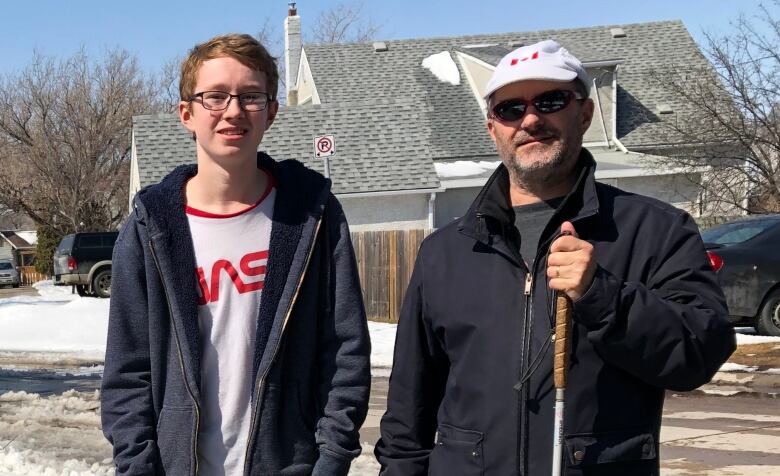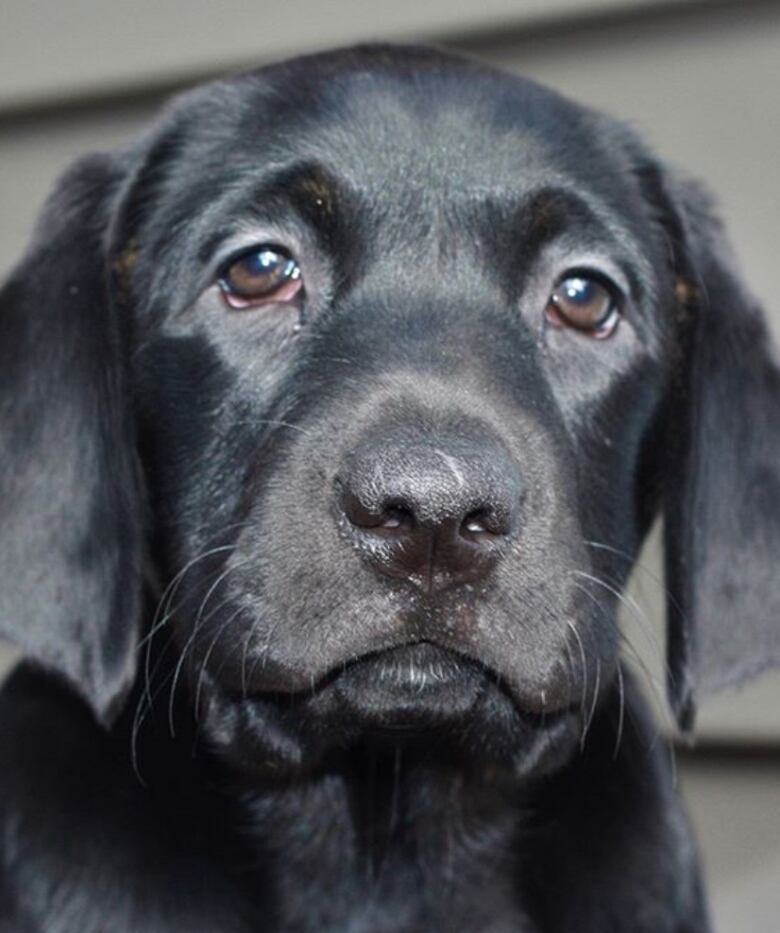Going in blind: How a man and his guide dog navigate the pandemic weeks after being hit by a car
Tracy Garbutt and Marion are taking steps toward regaining their confidence as a team

Navigating the city is presenting a whole new set of challenges for Tracy Garbutt, and the pandemic is only a part of it.
Garbutt is blind and typically can move freely around the city alongside his guide dog, Marion, but that changed after they were hit by a vehicle last month. NowMarion isstaying a little closer to home while the pair work to regain their confidence.
"She's a trooper and I know she still really wants to work. It's just going to take time to work through the noises and different things going on on the street to make sure she's keeping us both safe again," Garbutt said.
Garbutt typically travels around the city for work and errands such as groceries. He relies on touch, which makes it difficult at this time of physical distancing and even more challenging without his dog.
Garbutt and Marion were hit by a carwhile crossing Portage Avenue on March 10. Garbutt went off the hood while Marion was pinned under the front tire.
Garbutt remembers confusion and the sound of his dog in distress.

"She knows to protect me and look out for me, but when it happened so quick, it was really traumatic to know that she was pinned underneath," Garbutt said.
"Her tail was under one of the tires and that made it really hard. At the same time, I was really scared and didn't know if other traffic was coming."
Garbutt's wife and their 17-year-old son, Noah, arrived soon after the collision.
"I didn't know what to expect. Mainly, I was just worried for my dad. Imagine getting hit by a car that's already traumatic but not being able to see. It's even worse," said Noah.
By the time Noah and his mom arrived, witnesses had helped direct the driver to reverse thevehicle and free Marion from beneath its tire.
Garbutt recalls a feeling of relief when his family arrived and could care for Marion. He was then assessed by paramedics but was able to walk away from the crash.
Virtual guide
Garbutt and Marion have physically recovered, but gaining back the confidence to operate well as a team will take some time.
Typically a guide dog mobility instructor would lend a hand, but the COVID-19 pandemic makes it impossible to provide that service in person. The illness caused by a new coronavirus, which has sickened millions of people around the world but only slightly more than 250 in Manitoba,has shut down non-essential services as health officials try to contain it.
"I wish I could be there with the team, but with the current conditions, that's not possible," said Shona Kent, a guide dog mobility instructor with CNIB.
Kent worked with Garbutt and Marion when they first teamed up in July. They spent two weeks together, which gave Kent an opportunity to get to know how they typically hold themselves. She's relying on that prior knowledge to inform the movements she now observes virtually.
"I'm looking at the comfort of Tracy as a handler, the comfort of his dog, how they're communicating, how they're working together," Kent said.

To make it work, Kent has Noah follow his dad and Marion with a camera phone. She instructs Noah to hold the phone at different angles so that she can watch their movements and their reactions to things such as traffic and pedestrians.
She watches things like the way Garbutt holds his arms or how tight he appears in the shoulders, or the wayMarion carries her tail.
The training is going well, but there are new barriers in a world where physical distancing is being enforced.
Guide dogs are trained to avoid pedestrians but not at a specific distance, which makes staying two metres apart particularly difficult.
"In these circumstances, you're really looking for the sighted pedestrians to really take charge of the situation and actually give people that distance," Kent said.

That kind of co-operation from the greater community is being urged by the provincial government.
"I want you to be mindful of people who live with disabilties. That includes those who are visually impaired," chief provincial public health officer Dr. Brent Roussinsaid during a news conference on Wednesday.
"Some may require assistance at times;other people with other disabilties may require assistance. We should be mindful of that and not be too judgmental in our frame of mind right now with physical distancing," he said.
Garbutt is relying more than ever on other people to look out for him and guide him, but he's confident that a little time and hard work will have him and Marion taking on the world together again.
"It's just going out every day with the trainer and working on all the basics and really fine-tuning again," he said.
"The good news is she's showing more strength than I am right now, so I have to keep it together for both of us."












_(720p).jpg)


 OFFICIAL HD MUSIC VIDEO.jpg)
.jpg)



























































































